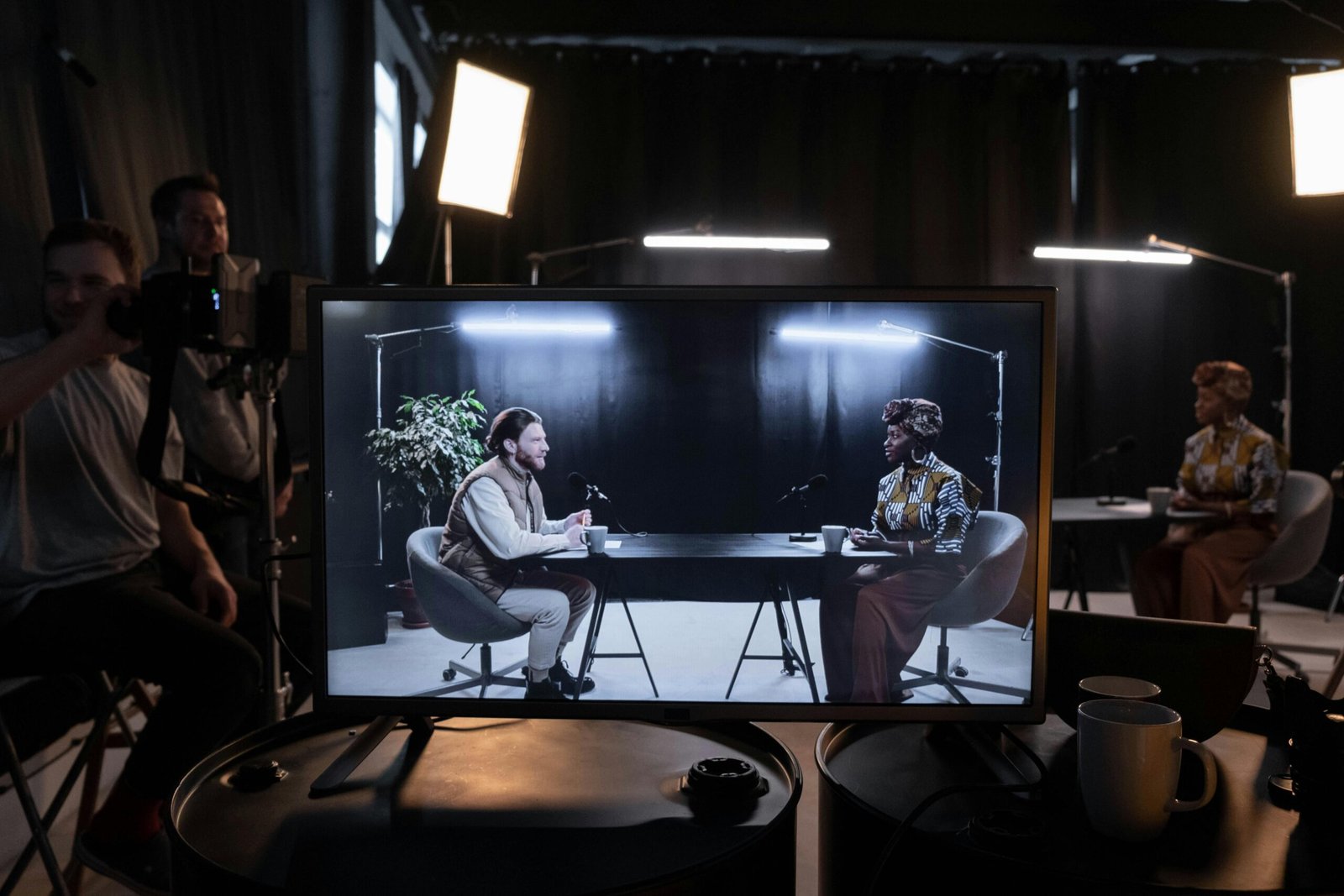Disclosure: This article contains affiliate links, which means we may earn a commission if you purchase through these links at no additional cost to you.
Creating a professional studio setup is crucial for podcasters aiming to deliver high-quality audio and an engaging listener experience. Whether you’re just starting or looking to upgrade your setup, here are the essentials to consider for your podcasting studio.
1. Microphone
A high-quality microphone is the cornerstone of any podcast studio. Choose a microphone based on your budget and the type of content you produce:
- Dynamic Microphones: Ideal for reducing background noise and handling loud environments.
- Condenser Microphones: Better for capturing detailed and nuanced sound in quieter settings.
2. Headphones
Investing in a reliable pair of closed-back headphones ensures accurate sound monitoring and helps you catch issues like background noise or audio distortions during recording.
3. Audio Interface or Mixer
For podcasters using XLR microphones, an audio interface is essential to convert analog signals into digital audio. Mixers offer more control over sound levels, making them ideal for multi-guest setups.
4. Pop Filter and Boom Arm
- Pop Filter: Reduces plosive sounds (like “P” and “B”) for cleaner recordings.
- Boom Arm or Stand: Keeps your microphone steady and at an ideal height and distance.
5. Acoustic Treatment
Improving your room’s acoustics minimizes echo and external noise. Consider these options:
- Foam Panels: Absorb sound and reduce reverb.
- Bass Traps: Control low-frequency noise.
- Carpets or Rugs: Dampen sound reflections.
6. Lighting (for Video Podcasts)
If you record video podcasts, proper lighting enhances visual quality. Use tools like:
- Ring Lights: Provide soft, even lighting.
- Softboxes: Reduce harsh shadows.
- LED Panels: Adjustable brightness and color for professional effects.
7. Recording Software
Choose software tailored to your editing needs. Options range from free programs like Audacity to professional tools like Adobe Audition or Logic Pro.
8. Comfortable Seating
A comfortable chair ensures you can record long episodes without fatigue. Look for ergonomic designs with adjustable features.
9. Backup Solutions
Always have a system for backing up your recordings:
- External Hard Drives: Store raw and edited files.
- Cloud Storage: Access files from anywhere and add an extra layer of security.
10. Cable Management
Organized cables prevent tripping hazards and keep your workspace tidy. Use cable ties, clips, or under-desk organizers.
Bonus Tip: Test Your Setup
Before recording, test your setup to ensure everything works seamlessly. Conduct sound checks, adjust levels, and verify your equipment’s functionality.
Conclusion
A well-equipped studio not only improves the quality of your podcast but also enhances your workflow and confidence as a creator. Start with the basics, and as your podcast grows, consider investing in upgrades to refine your setup further. Let your studio reflect your dedication to delivering exceptional content to your audience.

